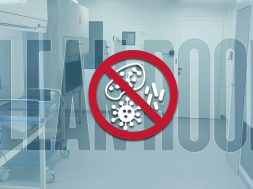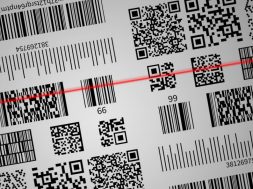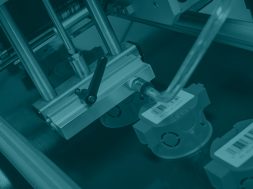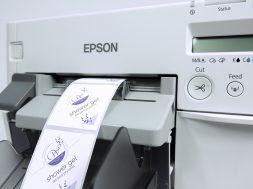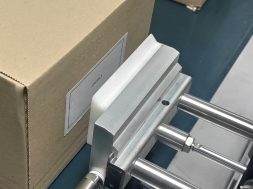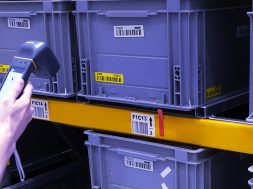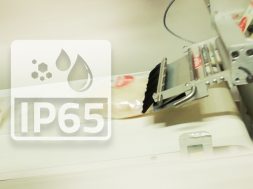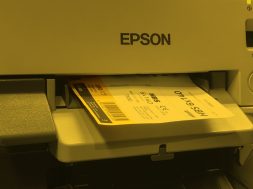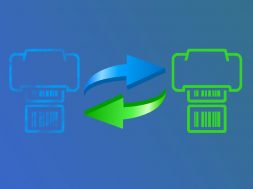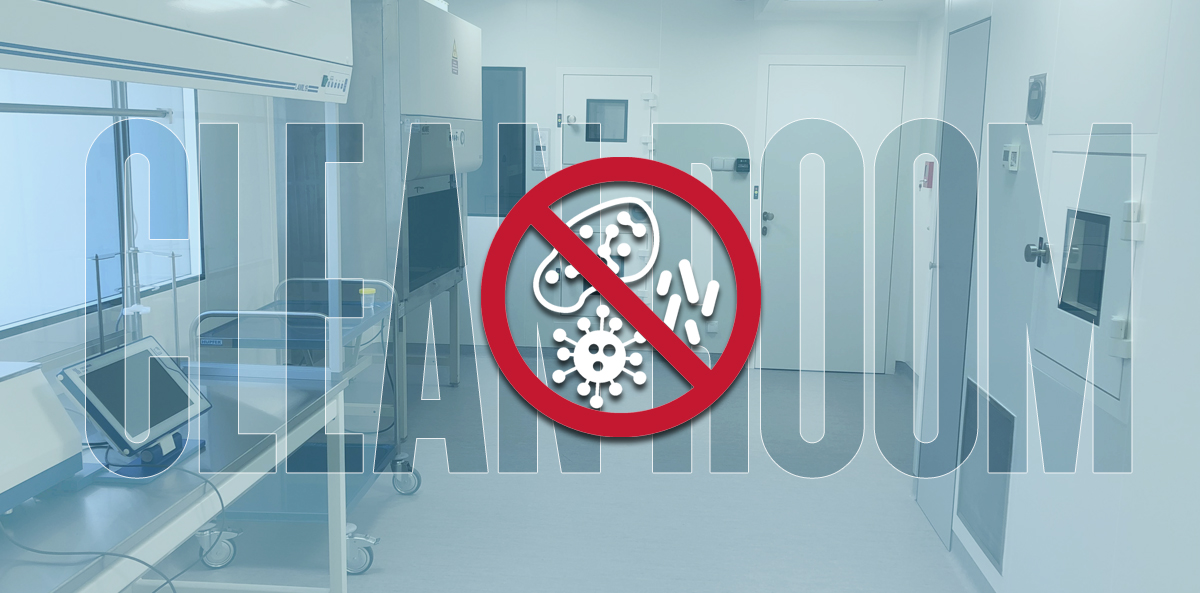
The use of clean room labels
etiCALLS equips clean rooms with a complete set of products and tools specially designed for identification
A clean room is a clean space where the environment parameters are controlled, monitored and maintained in the right proportions; especially referring to pollution types such as dust, bacteria, and chemical fumes. Special HEPA filters are used in clean rooms; these capture the surplus particles and remove them from the environment. The amount of pollution is measured with specially designed particle meters. In particular clean room zones, the amount of acceptable particles is unpredictable. How does labelling appear in such conditions? Which labels are best for a clean room?
Paper is a material which, according to directives in the CSM agreement of the Fraunhofer Institute, should not be used in clean room spaces.
It is related to the fact that papers and all paper products (e.g. cartons, gloves container boxes, masks or notebooks, etc.) release a large amount of particles into the environment.
Examining with a particle meter has show that a number of small particles with diameter of up to 0,5 µm in a room where a limited amount of carton and paper materials are stored, could be more than ten millions higher than in a room where more materials of this type are stored.
Due to this, it is important to use products which are marked with low dusting level or are made of non-dusting materials in clean rooms.
Application of labels without risk
Labels are utilised in many areas of production, including the production process of medical preparations such as: pills, ointments, capsules and many others. They are also used in the manufacturing of medical and electronic products. It important to use them in order to avoid failing of an end product. At the same time they create the risk of releasing of particles into the environment.
Labels are often positioned in the last stage of production, usually in low classes of purity. It takes place when products are placed into a direct package. As a result, a risk of its contact with the outside environment is non-existent. In classes of purity such as ISO 8 or ISO 7, an acceptable number of particles in a cubic meter are so high, that placing a label does not cause any risk of polluting the environment.
However, there are a few major conditions:
- The label should be made of paper, as much as possibile. The paper should be covered with a material inhibiting the release of particles into the atmosphere. The material covering the label, as well as reducing dust, should also be resistant to friction, provide durability for overprint and durability of the label itself.
- In clean rooms, due to the methods of overprint and the number of particles generated during this operation, laser printers are not to be used. In such cases, a thermal transfer printer can be successfully put into operation.
- Labels should not be susceptible to damage from disinfecting products, with no risk of damaging the material or the overprint on a label.
- Any labelling operations should be executed in cases of ISO classification no higher than ISO 7. This is due to the fact that in the higher classes of purity, it is forbidden to use any type of paper.
Labelling also introduces some risk microbiological contamination. Therefore, again, these products should be used in classes of purity no higher than ISO 7.
The most important point is the appropriate preparation of a label; treating it with a non-dusting material and cutting it in a manner that does not generate particles means that it can be safely used in low classes of purity, at the same time without causing high dust pollution in the environment. The solution here is the etiCALLS system.
The etiCALLS system in clean room
etiCALLS a complex product identification support for laboratories and clean rooms. The materials applied in the system have been appropriately selected. Due to this, they fulfil highest requirements for this difficult and demanding environment.
The raw materials used for production of labels of etiCALLS system are based solely on foil materials. Thus, they do not release particles into the ambient. Any paper label is covered with a layer of silicone.
The label overprint is done with the use of thermal resin transfer tape and a dedicated thermal transfer printer, included in the system. During this process, the printer head heats up thermal transfer tape, providing a very durable and resistant overprint on the label. During this type of printing, no unnecessary particles are produced.
The special thermal transfer tapes used in the etiCALLS programme provide an overprint that is not only resistant to abrasion, but also chemically resistant and not susceptible to organic diluents, such as: xylene, ethylene alcohol, isopropanol, methanol, formalin, toluene and acetone. Labels with overprint are not affected by adhesives and will not discolour. Thus the information on a label remains clean and legible. It can also be sterilised. These labels demonstrate a perfect adhesiveness to a variety of types of surfaces, as well as a resistance to high and low temperatures between -196oC and +150oC.
Labels for rooms with classes of purity ISO 9-7
etiCALLS system equips Clean Rooms with a complete set of products and tools which allow for easy marking and identification of a product, as well as facilitating the tracking of all processes.
The software included in the system enables the simple design and printing of labels in thermal transfer printers. It contains ready-made patterns from the etiCALLS programme. Thanks to this, the user can promptly and proficiently prepare a required label.
etiCALLS system fulfils the requirements concerning the usage of labels in clean rooms with classes of purity ISO 9-7. During last year’s EuroLab fair, it received an honourable mention in the category of “Clean room and laboratory equipment”.
We would like to thank Mrs Patrycja Sitek, the CR Konsulting company executive, for her significant and substantial contribution to development of the above text. Patrycja Sitek is a qualified biotechnologist and a chemist. She has 10-year experience in the clean room field.
(1627)
